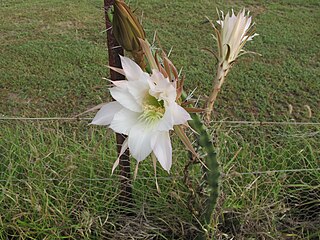
Harrisia pomanensis is a species of cactus.

Lobivia cinnabarina is a species of cactus first described in 1885.

Thelocactus tulensis is a species of cactus. It is endemic to Mexico.
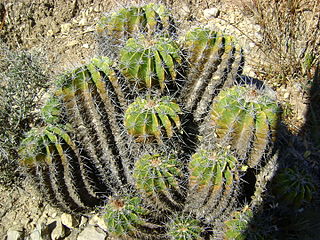
Ferocactus flavovirens is a species of Ferocactus from Mexico.
Frailea gracillima is a species of Frailea from Brazil, Paraguay, and Uruguay.

Harrisia tortuosa is a species of cactus in the Trichocereeae tribe.

Gymnocalycium monvillei is a species of Gymnocalycium from Argentina.
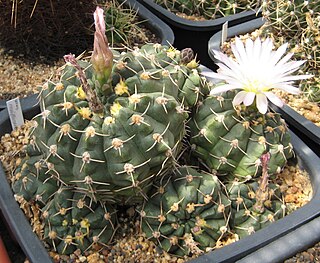
Gymnocalycium uruguayense is a species of Gymnocalycium from Brazil and Uruguay.
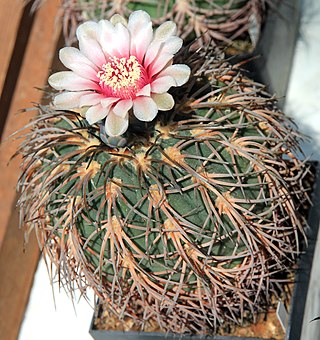
Gymnocalycium spegazzinii is a species of Gymnocalycium from Argentina and Bolivia named after the botanist C. L. Spegazzini.
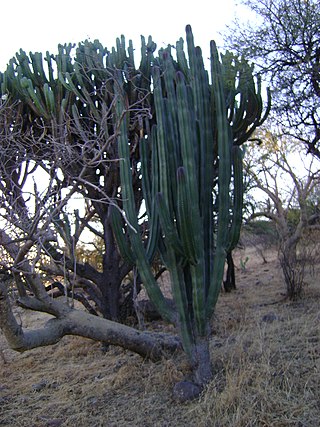
Stenocereus montanus, known as sahuira, is a species of columnar cactus in the family Cactaceae.
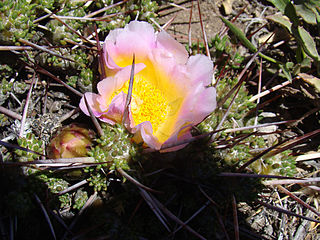
Maihuenia patagonica, commonly known locally as chupasangre or siempre verde, is a succulent cactus shrub native to Chile and Argentina. Maihueniapatagonica is remarkably tolerant to moisture and cold temperatures.
Stenocereus martinezii is a species of flowering plant in the family Cactaceae, native to Sinaloa in Mexico. A candelabriform cactus typically 5 to 7 m tall, it is easy to propagate from cuttings, so local people use it to build live fences.

Melocactus bahiensis is a species of Melocactus found in Bahia, Brazil.

Pachycereus weberi is a columnar cactus plant native to Mexico.

Cephalocereus euphorbioides is a species of Cephalocereus from Mexico.

Borzicactus sepium is a species of Borzicactus found in Ecuador.

Cochemiea poselgeri is a species of Cochemiea found in Mexico
Stenocereus fricii is a species of cactus in the genus Stenocereus, endemic to Mexico.
Stenocereus chacalapensis is a species of cactus in the genus Stenocereus, endemic to Mexico.
Stenocereus chrysocarpus is a species of cactus in the genus Stenocereus, endemic to Mexico.















